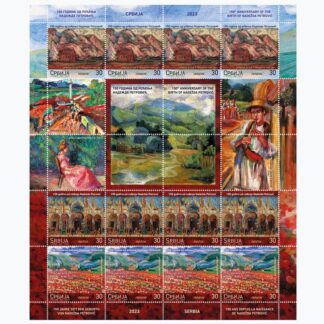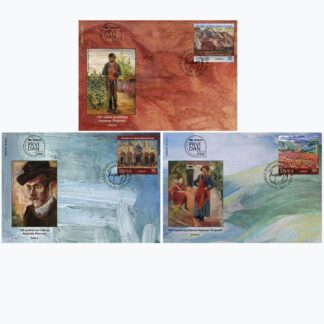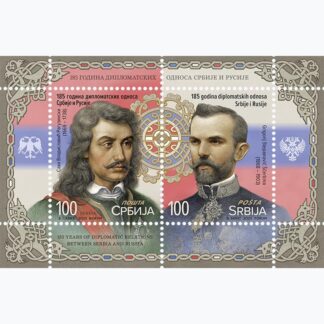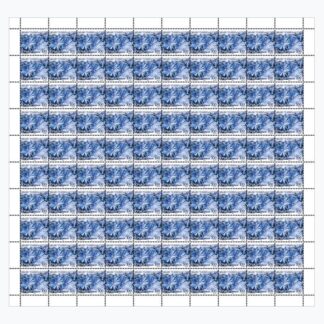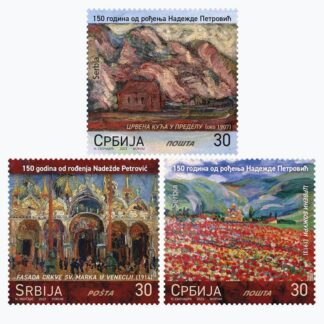Description
Nadežda Petrović (Čačak, October 11, 1873 – military hospital near Valjevo, April 3, 1915) comes from distinguished families important for Serbian history. Educated as a painter in Belgrade under Đorđe Krstić and Kiril Kutlik, and then in Munich under Anton Ažbe and Julius Exter, she was a pioneer of modern art, a drawing teacher at the Higher Women’s School in Belgrade, an art critic, the author of a theatre play, one of the founders of the Circle of Serbian Sisters, the Serbian Art Association and the Paris League for the National Rights of Oppressed Peoples, the first Serbian woman to be engaged in photography. She organized the work (1905) and exhibition (1907) of the Yugoslav Art Colony.
She stayed in Rome (1907) and Paris (1910-1912), followed the Venice Biennale and other prestigious art exhibitions in Europe. She exhibited independently and at joint art reviews in our country and around the world. She brought aid to peoples under Turkish occupation and led protests against the annexation of Bosnia and Herzegovina (1908). She spoke about the rights of Serbs and other enslaved Slavic peoples at meetings in our country and, thanks to her knowledge of French, German and Russian, abroad as well. She was a volunteer nurse in the Balkan Wars and the First World War. She reached the top in everything she passionately devoted herself to. Her works are the pride of our most prestigious museums, galleries and private collections. Her work belongs to the movements of Art Nouveau, Symbolism, Expressionism, Impressionism and Fauvism, and in a certain way Abstract Art. Educated and gifted, with clearly expressed views of an artist, intellectual and humanist, she managed to remain herself and belong to everyone.
To make our sorrow over the bad fate of Nadežda Petrović, an unsurpassed painter and unsurpassed patriot, i.e. over the fact that she died in the tension of her creative powers, even greater, and for the Serbian history of art an irreparable loss, this selection of paintings, with which the Post of Serbia marks the 150th anniversary of her birth, convincingly testifies to its artistic values. These are masterpieces in every respect, executed in an impressive drawing style, colourfully ringing, pictorially juicy, expressionistically strong and convincing, with strokes that, with their immediacy, freedom and freshness, confirm the artist who poured her soul into her work.
Motifs on stamps: Red house in the countryside (1907); The facade of the Church of St. Mark in Venice (1914); Red Peonies (1913). Motives on the vignettes: Prizren (1913); Anđa in the yard (1910–1911); Landscape (1907); Shepherd plays the fife (1906). Motifs on the envelopes: Cleaning caterpillars (1906); Portrait of Jovan Skerlić (1907); Sisters (1905).
Expert collaboration: Ljubica Miljković and Nikola Kusovac
Graphic realization of the issue: Nadežda Skočajić, academic graphic designer

